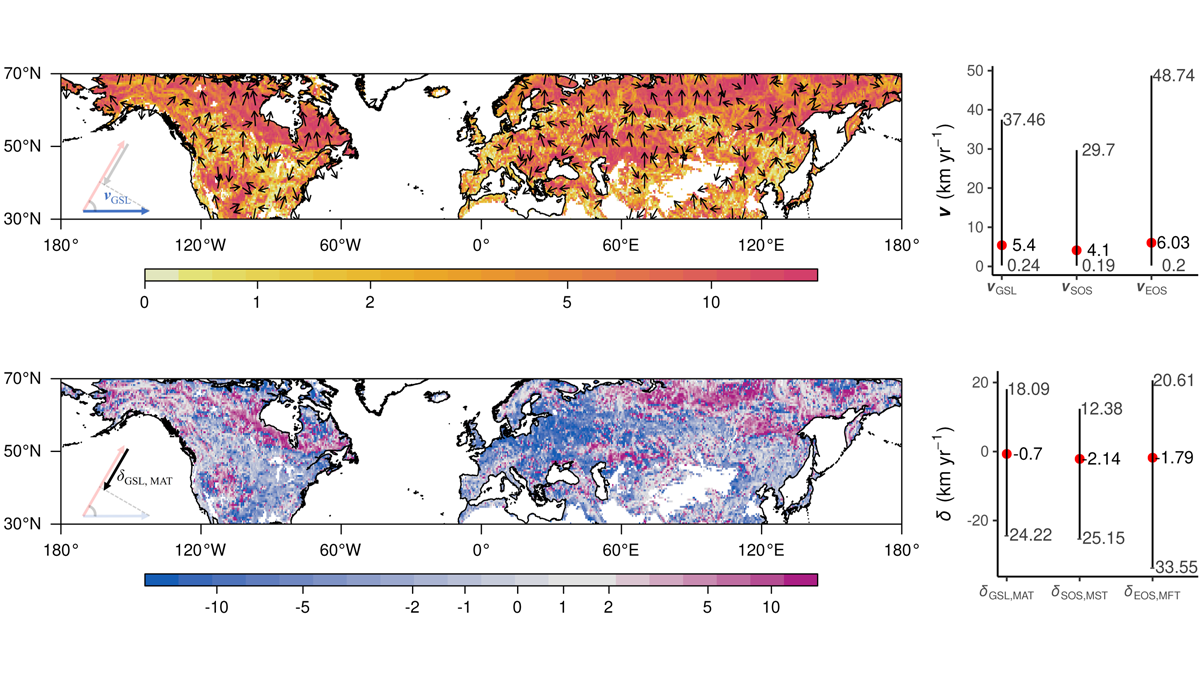Editors’ Highlights are summaries of recent papers by AGU’s journal editors.
Source: AGU Advances
Changes to phenology, the timing of biological events, are among the sharpest diagnostics of climate change. Indeed, one of the longest records of plant phenology has been kept by the Spanish Meteorological Agency (AEMET) as an adjunct to conventional climate records. Foliar (leaf) phenology is significantly driven by temperature, and spring onset and fall senescence are well-known to respond to changing climates. While foliar phenology is influenced by temperature, there are numerous other constraints on leaf development and senescence, including genotypic variations, sensitivity to day length, and insolation and interactive effects of moisture. As a result, phenological change may lag behind climate change. Song et al. [2021] use climate data and both in-situ and remotely observed indices of phenology to compare rates of change. They found numerous examples where phenological and climatic rates of change fall out of sync, but surprisingly, found the biggest discordance in the most human-dominated landscapes, with mismatch correlated with population density and also with intensively managed systems, such as agriculture. They further suggest this may be due to insufficient variation in crops, such that crop development is not optimally matched to regional climate. They argue that this shows a growing vulnerability of agriculture and missed opportunities for enhanced yield, but possibly opportunities for new plant varieties. This study, beginning with Earth Observations based on a simple greenness index, winds up pointing to the diversity within and between plant species, wild and domestic, as key to climate resilience.
Citation: Song, Y., Zajic, C., Hwang, T., Hakkenberg, C. & Zhu, K. [2021]. Widespread Mismatch between Phenology and Climate in Human-dominated Landscapes. AGU Advances, 2, e2019AV000431. https://doi.org/10.1029/2021AV000431
—David Schimel, Editor, AGU Advances

